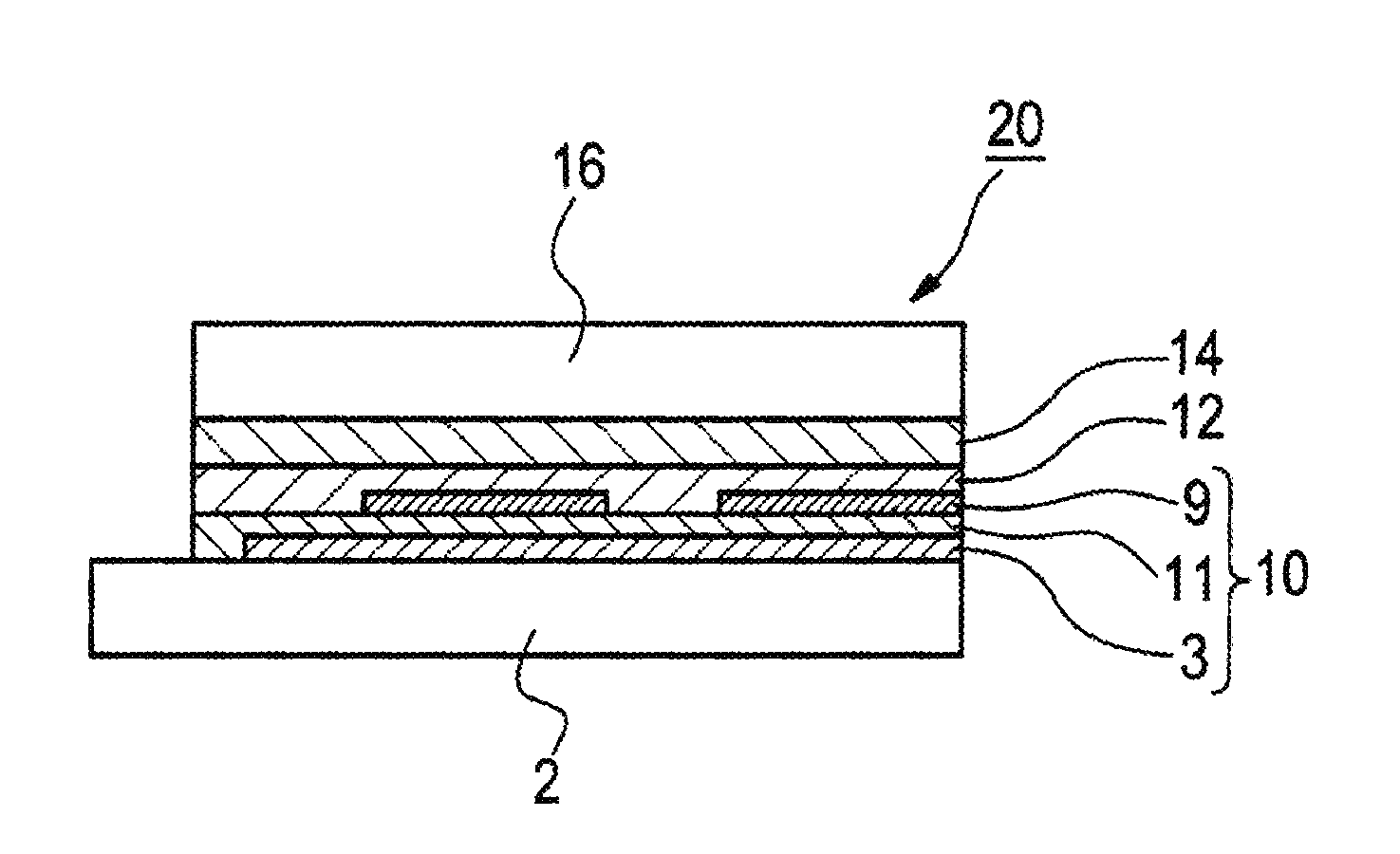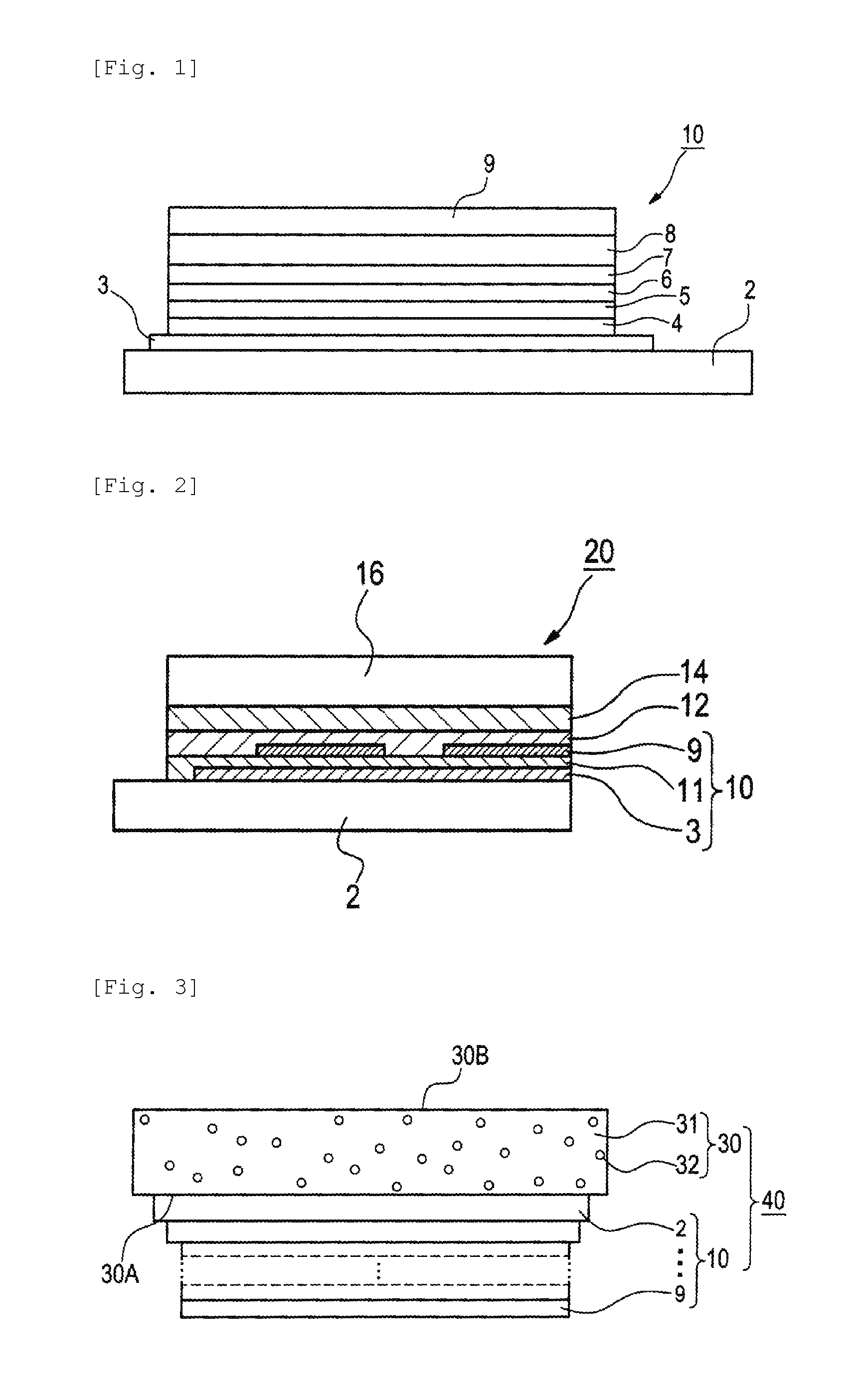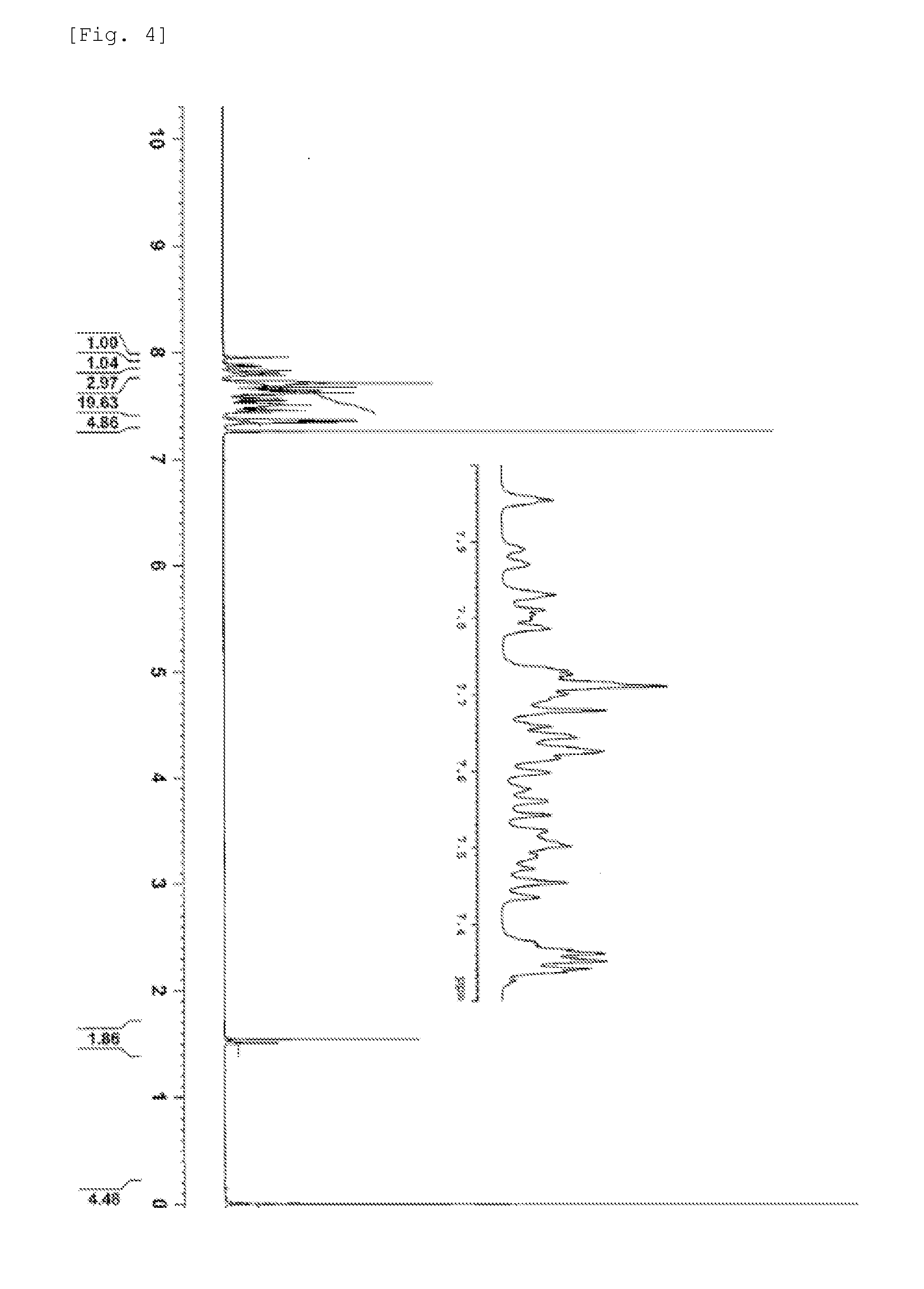Organic electroluminescent element, compounds and materials used for the organic electroluminescent element, and light-emitting, display and illuminating devices using the elements
- Summary
- Abstract
- Description
- Claims
- Application Information
AI Technical Summary
Benefits of technology
Problems solved by technology
Method used
Image
Examples
example 1
[0281]A compound (H-1) was synthesized according to the following scheme.
[0282]Sodium carbonate (171 g, 1.61 mol), 1-bromo-3-iodobenzene (77.3 mL, 806 mmol), toluene (400 mL), and water (800 mL) were charged into a 2-L three-neck flask, and were stirred at room temperature. The mixture was deaerated, and purged with nitrogen, and triphenylphosphine (21.2 g, 80.8 mmol), 4-biphenylboronic acid (80.0 g, 404 mmol), and palladium acetate (4.53 g, 20.2 mmol) were added. The reaction mixture was then refluxed and stirred under the nitrogen atmosphere for 7 hours. Then, the mixture was cooled to room temperature and ice-cooled. The precipitated solid was filtered, and washed with water and methanol to obtain compound 1 as a white solid (104 g).
[0283]The compound 1 (104 g, 336 mmol), bis(pinacolato) diboron (102 g, 402 mmol), potassium acetate (98.7 g, 1.01 mol), and anhydrous dimethylsulfoxide (1,000 mL) were added to a 2-L three-neck flask, and were stirred at room temperature. The mixture...
examples 2 to 11
[0288]The following compounds (H-2) to (H-14) were synthesized by using the same method used for the compound (H-1).
(Light Emitting Wavelength)
[0289]The compounds (H-1) to (H-14) of the present invention and compound D-2 (light emitting material; described later) were deposited on a quartz glass substrate (thickness: 0.7 mm, 2.5 cm square) in a 95:5 mass ratio by using a vacuum deposition method. As a result, a 50 nm-thick thin film was formed. The film was irradiated with 350-nm UV light, and the luminous spectrum of the emitted light was measured with a fluorescence spectrometer (JASCO Corporation; FP-6300) to read the maximum light emitting wavelength (nm).
[0290]Table 1 presents the results of the evaluation, using the following criteria.
Good: 435 nm or more and less than 455 nm
Acceptable: less than 435 nm
Poor: 455 nm or more
TABLE 1LightLight emittingemittingHost materialmaterialwavelengthRemarksCompound (H-1)Compound D-2GoodPresentinventionCompound (H-2)Compound D-2GoodPresentin...
example 101
[0291]A glass substrate having an ITO film measuring 0.5 mm in thickness and 2.5 cm square in size (Geomatec Co., Ltd.; surface resistance 10Ω / □) was placed in a washing container. After ultrasonic washing in 2-propanol, the substrate was UV-ozone treated for 30 min. The following organic compound layers were deposited in order on the transparent anode (ITO film), using a vacuum deposition method.
First layer: HAT-CN; thickness 10 nm
Second layer: HTM-1; thickness 30 nm
Third layer: Compound (H-1) and compound (D-1) (mass ratio 95:5); thickness 30 nm
Fourth layer: ETM-1; thickness 30 nm
[0292]Then, lithium fluoride (1 nm) and metallic aluminum (100 nm) were deposited thereon in this order to make a cathode.
[0293]The resulting laminate was put in a glove box purged with a nitrogen gas without bringing it into contact with the atmosphere and then sealed with a sealing can made of glass and an ultraviolet ray-curable adhesive (XNR5516HV, manufactured by Nagase-CIBA Ltd.). As a result, organ...
PUM
| Property | Measurement | Unit |
|---|---|---|
| Current | aaaaa | aaaaa |
| Digital information | aaaaa | aaaaa |
| Electric charge | aaaaa | aaaaa |
Abstract
Description
Claims
Application Information
 Login to View More
Login to View More - R&D
- Intellectual Property
- Life Sciences
- Materials
- Tech Scout
- Unparalleled Data Quality
- Higher Quality Content
- 60% Fewer Hallucinations
Browse by: Latest US Patents, China's latest patents, Technical Efficacy Thesaurus, Application Domain, Technology Topic, Popular Technical Reports.
© 2025 PatSnap. All rights reserved.Legal|Privacy policy|Modern Slavery Act Transparency Statement|Sitemap|About US| Contact US: help@patsnap.com



